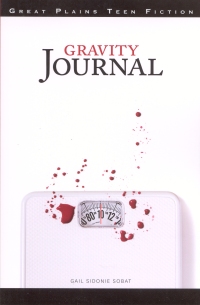| ________________
CM . . .
. Volume XIV Number 21. . . .June 13, 2008
excerpt:
There are risks when writing a young adult novel about anorexia. They're purchased by yearning-to-be-thin teens as how-to manuals on purging. Look at some pro-anorexia blogs and websites and you'll see what I mean. Because of this, it is not enough to simply write a compelling read. Lives can be lost due do a flippant turn of phrase, so an anorexia novelist must also provide support and illumination. So it was with trepidation that I picked up Gravity Journal by Gail Sobat: written in journal style, the anorexic has a dysfunctional family, and the anorexic also engages in self-mutilation. This has all been done before. I prepared myself for yet another YA novel that tried to be trendy but missed the mark. Instead, I was sucked in to the world of Anise, a gifted young woman from a troubled family, on the eve of her admission into the hospital for an eating disorder. Sobat has crafted nuanced and textured characters, from Anise herself, to her troubled brother and cold mother. Anise's fellow patients are not caricatures. They're real. Anise is more concerned about her addict brother's welfare than her own. She will go out on a limb to help anyone but herself, and, in showing that, Sobat has got to the underbelly of eating disorders. Much of the media makes it seem that eating disorders are caused by fashion magazines and a teen's desire to be thin, but while culture can exacerbate the problem, anorexia is more about the inability to love oneself than it is about appearance.
Highly Recommended. Marsha Skrypuch's tenth book, Daughter of War, was just published. Her first novel, The Hunger, was time-travel novel about an anorexic teen.
To comment
on this title or this review, send mail to cm@umanitoba.ca.
Copyright © the Manitoba Library Association. Reproduction for personal
use is permitted only if this copyright notice is maintained. Any
other reproduction is prohibited without permission.
NEXT REVIEW |
TABLE OF CONTENTS FOR THIS ISSUE
- June 13, 2008.
AUTHORS |
TITLES |
MEDIA REVIEWS |
PROFILES |
BACK ISSUES |
SEARCH |
CMARCHIVE |
HOME |
